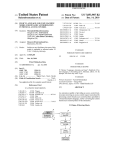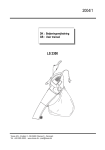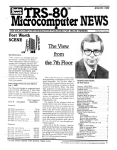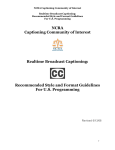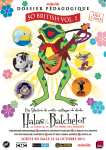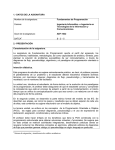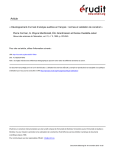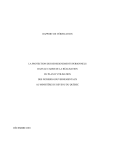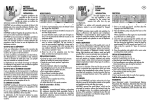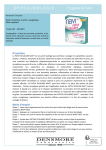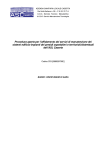Download Lindamood® Program - Gander Publishing
Transcript
Phonemic Awareness for reading spelling & the Lindamood Program ® The LiPS Program ® ■ Consonants ■ Vowels ■ Tracking sounds in syllables ■ Reading ■ Spelling Phoneme Sequencing for reading spelling & the Lindamood Program ® The LiPS Program ® CD-ROM User Guide Gander Publishing 412 Higuera Street, Suite 200, San Luis Obispo, CA 93401 Lindamood Phoneme Sequencing Program CD-ROM Copyright © 1997, 2002, 2003 P.C. and P.D. Lindamood ® Gander Publishing 412 Higuera Street, Suite 200 San Luis Obispo, CA 93401 Information Phone # (805) 541-5523 Copyright Notice and License Agreement The Lindamood Phoneme Sequencing® Program manual, program, product design, and design concepts are copyrighted, with all rights reserved to P.C. and P.D. Lindamood.Your rights are subject to the limitations and restrictions imposed by the copyright laws of the United States of America. Please note that you may not use, copy, modify, or transfer the program or documentation or any copy, except as expressly provided in the license agreement. The accompanying computer program(s) (“Software”) is licensed, not sold, to you by Gander Publishing for use under the terms of the license. See the disk packet envelope for a full text of the software license. By opening the disk packet you agree that you have read the license printed on it, that you are bound by its terms, and that it is the only agreement between you and Gander Publishing regarding the program and documentation. Trademarks Lindamood, Lindamood Phoneme Sequencing, and LiPS are registered trademarks of Patricia and Phyllis Lindamood. Macintosh is the registered trademark of Apple Computer Inc. Windows and Windows 95 are the registered trademarks of The Microsoft Corporation. ii The Lindamood® Program - CD ROM User Guide Contents Quick Start Guide..................................................................... 1 Good Things for You to Know ................................................. 2 Computer Configuration Information ...................................... 3 Menus ..................................................................................... 5 Lindamood® Program Philosophy and Steps............................... 7 Preparing Students to Use This Software.................................... 8 CD Module Descriptions: Consonants.............................................................. 9 Vowels...................................................................... 9 Picture Tracking..................................................... 10 Marvin Mouth Reading Game............................... 10 Cat Spelling............................................................ 10 Types of Reports .................................................................... 12 Interpreting Reports................................................................ 13 Software Support and Other Services....................................... 19 Word Lists: Picture Tracking..................................................... 22 Marvin Mouth Reading Game............................... 24 Cat Spelling............................................................ 25 The Lindamood® Program iii iv The Lindamood® Program - CD ROM User Guide BASIC INSTALLATION INSTRUCTIONS PC Put in the CD-ROM Put in the CD-ROM → double click on “My Computer” → MAC → double click on the “Lips 1.2” icon double click on the “Lips” double click on “Install.EXE” → → double click on the CD Icon → → Fill in “Name” and “Company” Enter Registration Number EXACTLY (case sensitive) Put In a PassWord you will remember. MAC → double click on the “Lips 1.2” icon double click on the “Lips” PC Put in the CD-ROM → → Put in the CD-ROM TO RUN AFTER INSTALLATION double click on the “Lips” SHORTCUT ON THE DESKTOP The Lindamood® Program Good Things For You To Know 1) Getting to the Menu Bar Options: To be able to access the menu bar options, you must press, in Windows, the “control” key, or in Mac OS the command key, and the “m” key simultaneously and then enter the password you put in with your first installation.You have to do this every time you want to access a menu option. 2) Keeping Track of Performance: The program, by default, keeps a record of how you or your students are doing. This causes the computer to make each User log-in, or choose his or her name from the list. If you do not want to keep a record, choose the “Preferences” menu and select the “Unscored Record” option. 3) Get Someone to Help You / Gray Screen Overlay: If a User has too much difficulty, the computer will freeze the program, put up a translucent gray overlay on the current screen display and tell the User to get help. To proceed, you must press the “shift” key and the “p” simultaneously, at which point the program will begin executing right at the spot where the User had the problem. That should get you started. Enjoy the software. The Lindamood® Program - CD ROM User Guide Computer Configuration Information Mac OS™ systems Apple® Macintosh LC III or better (PowerPC is strongly recommended) with System 7.1 to 9.2.2. QuickTime 2.1. CD-ROM dr ive, double speed (quad-speed is strongly recommended). 12” RGB or larger monitor (color set to 256). 8 megabytes of physical RAM (16 megabytes is strongly recommended). Windows™ systems 486 or better PC (recommend a Pentium PC) with Windows™ 3.1, 95, 98 or ME; MS-DOS 6.0 or greater. QuickTime for Windows 2.0.1. Sound Blaster Pro [or 100% Sound Blaster compatible] sound card (8 bit minimum) and speakers. CD-ROM dr ive, double speed (quad-speed is strongly recommended). VGA monitor capable of 640 x 480 pixel display at 256 colors, local bus Windows™ video accelerator card. 8 megabytes of physical RAM (16 megabytes is strongly recommended), and all appropriate drivers for sound card, CD‑ROM drive, etc. On both Mac OS™ and Windows™ systems, this software requires at least 5 megabytes of available RAM to launch. Installing the Program The first time you launch the software (see “Starting the Program” on the next page) you will get a registration screen. Put your Name, Company, and Registration Number in the boxes displayed on-screen. The registration number is on the envelope the CD came in. The Lindamood® Program You can use the “tab” key or click in a box to move between the different entry fields. Press the “enter” or the “return” key, or click the “OK” button, when you have finished all entries. That’s all you have to do to install the program. NOTE: You must put something in the “Company” box, such as an X if you are an individual rather than a company or school. Please fax or mail in your completed registration form in order to be eligible for support services. Starting the Program Mac OS™ System 1) Place Lindamood® CD in CD-ROM drive. 2) Double click CD icon on the desktop. 3) Double click “begin” icon. Windows™ 3.1 1) Place Lindamood® CD in CD-ROM drive. 2) Open Windows 3.1 (if not already open). 3) Open “Main” (if not already open). 4) Open “File Manager” (if not already open). 5) Select CD-ROM drive (usually “d” or “e”). 6) Double click “begin.exe” icon. Windows™ 95 1) Place Lindamood® CD in CD-ROM drive. 2) Double click “My Computer” icon. 3) Double click CD-ROM drive (usually “D:” or “E:”). 4) Double click “begin.exe” icon. The Lindamood® Program - CD ROM User Guide Menus Menu Explanation There are four menu options in the program itself. Most Users will never need to do anything with the menus. But for those who may use them, below is a brief explanation. It is very important to remember that you must use your password to access the menu selections. If you have not put in your password the options will be grayed-out and unavailable. Also, remember that you must use the password each time you want to make a menu selection. File “New User” is an option that restarts the program from the entrance of the red hen. That way, new persons can enter their names. This is automatically done as a User exits the program, so it will be rare to use this menu option. “Quit” is the only menu option that does not require use of the password to access. A User can always quit the program. Edit “Delete names” is the option you use to remove Users from the list. This is the only method to take a name away. Please remember that if you delete a User name from the list, you also lose all the records of that User’s performance. Preferences “Scored Record” is the default setting your program will have after initial installation. This means each User is required to log in with name, age, and grade level. The log-in process creates a record for that User’s name where performance information is kept (see section on Scores) so it is possible to get some kind of report. “Unscored” is the setting to use if you do not want to keep track of User performance. If this is selected, the program asks each User to put in a name at the start of the session. NO RECORDS ARE KEPT in this mode. The Lindamood® Program “Change Password” is the third setting in this menu. At the time the program is installed a password must be entered. This is where you can change that password, or any subsequent password. (You do have to know the existing password). Reports “Get Reports” takes you to the reports section of the program. There you have access to the performance records of any Users showing up on the names list when “Scored Record” is the active option. Just follow the screen directions after you select this option. The Lindamood® Program - CD ROM User Guide Lindamood® Program Philosophy and Steps Goal The overall goal of the Lindamood® Phoneme Sequencing Program, formerly the Auditory Discrimination in Depth (ADD) Program, is direct development of phonemic awareness—the ability to think about and manipulate the identity, number, and order of individual sounds within words—and application of phonemic awareness for independence and selfcorrection in spelling and reading. Phonemic awareness is critically related to mastering the use of our alphabet code, in which sequences of sounds in words are represented by sequences of letters for spelling and reading. Research indicates, however, that some children and adults are genetically endowed with phonemic awareness, while others are not. For this reason it is best to directly stimulate its development, so that individuals can have this support in accessing their full potential for written language. Steps In the total Lindamood® Program there are five processing steps to be mastered: • Consonants • Vowels • Tracking• Spelling • Reading The Program develops phonemic awareness by introducing students to articulatory feedback—the feeling of the mouth movements as sounds are produced. Students are questioned to bring the mouth actions that produce consonant and vowel sounds to conscious attention. They are helped to integrate oral-motor feedback with visual and auditory feedback to track and verify the identity, number, and order of sounds within spoken words. The tracking step, in which sounds in words are concretely coded with mouth pictures, and then with colored blocks, is a unique feature of the Lindamood® Program. The development of this ability to judge sounds and their order in words enables comparator function, the ability to hold and compare one spoken word with another, or compare a spoken word with its written form. As the students become able to sequence and compare sounds within words, they are helped to apply that judgement for independence and self-correction in spelling and reading single syllable words, multisyllable words, sight words, and context. ® The Lindamood® Program The - Philosophy Lindamoodand Program Steps Preparing Students to Use this software The modules on this CD provide problem-solving activities to reinforce the concepts presented in the Lindamood® Phoneme Sequencing Program: that consonants and vowels can be felt, first just as single sounds, then as sequences of sounds within words. Before students go to the computer, it is extremely important for an instructor to use the questioning process illustrated in the sample dialogues in the Lindamood® Program manual and/or the Training Video Tapes to help students discover they can feel consonant and vowel sounds. (See Product Information page 19.) If the instructor tells this sensory information about mouth movements, students can only memorize it. There is no physical reality—no oral-motor kinesthetic feedback—for them to use in self-correction. If interactive questioning elicits this sensory-cognitive thinking and reasoning base, the computer problem-solving activities can further reinforce this base. They can stimulate comparator function and the application of this multisensory feedback for selfcorrection in reading and spelling, and also in speech. Please give full attention to the development of this sensory-cognitive base, so the multisensory feedback and comparator function become an automatic process in the student’s central nervous system and activate self-correction. The Lindamood® Program - CD ROM User Guide CD Module Descriptions This CD—Consonants, Vowels, Picture Tracking, Reading Game, and Cat Spelling—is designed for practicing concepts introduced by an instructor using the Lindamood® Phoneme Sequencing Program, formerly the Auditory Discrimination in Depth (ADD) Program. Guidance and modeling in introducing these concepts is offered in the Lindamood® Program manual and in the Training Video Tapes. (See Product Information, page 19.) Consonants Depending on which groups of consonants have been introduced, Users can select individual groupings (for example, just the Lip Poppers or just the Nose Sounds) or a range (for example, the first 5 Pairs or the Other Consonant Groups). Users also select how many times they will practice each item—from 1 to 3 times. A stimulus (a label, mouth picture, letter, or sound) is presented on‑screen and Users are asked to match the other components. The stimulus is selected randomly, so there is no predicting whether the task will be matching a sound to the letter, mouth picture, and label or matching a label to the sound, letter, and mouth picture, etc. This prevents responses from becoming just a rotely memorized list or array. Vowels This Module has 4 basic elements. 1. Mouth Pictures and Label Practice asks students to match mouth pictures to given labels, and place the mouth pictures where they go on the vowel circle. Example: “Which picture goes with the Opens? Click and drag it to its place on the vowel circle.” 2. Sound to Picture Practice asks students to match sounds to mouth pictures. Example: “Which picture matches when I say /i/?” 3. Letter Placement Practice asks students to sort sounds and their letter symbols into the labeled groups and then order ® The Lindamood® Program The - Module Lindamood Descriptions Program the sounds/ symbols within the group. Example: “Drag this sound close to its picture.” Then,“Let’s put the letters in order in each group.” 4. Receptive Practice checks sound to symbol associations on the vowel circle. Example: “Click the letter that says /e/.” Users select which categories of vowels to practice. For example, Users may practice just Smiles, or Smiles and Rounds, or all categories. Picture Tracking In this activity the User tracks the phonemes within syllables using the Consonant and Vowel mouth pictures.The User selects the level of syllable to be tracked, from vc/cv syllable structure up to ccvcc. Also, the types of change can be selected, so the User can choose to track substitutions only, or up to all five types of change—additions, omissions, substitutions, repetitions, and shifts. All tracking tasks are in chains of ten items. The software advises Users when they should try the challenge of harder chains. Marvin Mouth Reading Game This is decoding practice presented in a game format. Marvin is an odd looking green character with a big mouth. He reads a word presented on-screen and the User judges Marvin’s accuracy. There are various levels of judgment the User can select. Easy means only choosing if Marvin matched or not. Sort of Hard has the User judge if Marvin matched or if he erred by substituting or omitting a sound. At the Hard level, the User must judge if Marvin matched or not, and if not, exactly how he failed to match. The User must decide if Marvin made his error by adding, omitting, substituting, repeating, or shifting a sound-letter relationship. 10 The Lindamood® Program - CD ROM User Guide Cat Spelling This is encoding practice also offered in a game format. Marvin is presented as busy, so his cat takes over to help the User do the spelling activity. As with the reading game, the spelling game has various levels of difficulty. 1. The simplest level is spelling nonsense patterns. The cat will accept any phonetically reasonable representation. 2.The next level contains nonsense words and real words that are phonetically consistent. The cat accepts any phonetically reasonable spelling for the nonsense words. For the real words, the cat will acknowledge a phonetically reasonable spelling (fase for face), but will guide the User to a correct spelling with questions and, if necessary, by spelling it herself. 3. At the most difficult level the User is also required to spell real words that are phonetically inconsistent (is, said). These are the elements of this CD. Details not covered in this explanation are generally explained within the software by on-screen information, spoken presentations, or print-out options. ® The Lindamood® Program The - Module Lindamood Descriptions Program 11 Types of Reports There are three types of reports to choose from in the Reports menu. Scores are only reported if the “Scored Record” option is selected in the menu. (This is the default setting at original installation.) Otherwise, no record is kept of User performance. 12 • The Most Recent Activity Report shows results from all the activities during the User’s most recent session (e.g. on 12/5/97 Johnny did Consonant,Vowel, and Picture Tracking activities, then exited. The Most Recent report will show the results of those 3 activities). • The User’s Cumulative Report shows all the results for the single selected activity in reverse chronological order (e.g.You want to see how Johnny has been doing with the Consonants.You pick this report and select Consonants and the results of all the Consonant activities Johnny has done are displayed. (The display is arranged with the most recent date at the top). • The Group’s Cumulative Report shows all the scores for each User in the data collection. The Users are listed alphabetically and the scores for each User are grouped by activity. Within each activity group for each User, the scores are listed in reverse chronological order. The Lindamood® Program - CD ROM User Guide Interpreting Reports Consonants The consonant practice scores show as a fraction: Top # = responses correct on first try Bottom # = total possible to be earned The bottom number, total possible, is always a multiple of four or five, because Users are asked to match four and five things to the stimulus given. For example, if the User practiced the Lip Poppers one time the score would be x/4. If the stimulus was the letter p and the User matched the correct sound, label, mouth picture, and its “brother” the b, the User would get 4/4. If the User did not match the label on the first try, the score would be 3/4. If the User chose to practice the Lip Poppers 3 times, the score would be x/12. Labels that were not chosen for practice are indicated by “N/A.” The scores are listed left to right, top to bottom. Sample Report: Consonants Jack Bell 1/15/97 Popper N/A Tapper N/AScraper N/A L.Cooler N/A T.Coolers N/ASkinny 8/8 Fat 8/8 Nose 8/10 Fat Push 6/8 Lifters 7/8 Winds 10/10 Important Note: If the student quits the Consonant Practice before practicing each item selected the chosen number of times, the scores will indicate the number of correct responses divided by the number of tasks originally selected. Consequently, this will not give you an accurate impression of the number of incorrect responses. The Lindamood® Program The - Interpreting Lindamood®Reports Program 13 Vowels Performance on all vowel activities is reported with a plus or minus for each sound or label selected to practice. For example, if Users are practicing Sound and Mouth Picture associations for Smiles and Opens, each item (/ee/, /i/, /e/, etc.) is scored plus if they accurately match a sound and label on the first try and minus if they don’t. The report for the Vowel Circle Practice may show scores for as many as six activities, depending upon what the User chose to practice: 1. Mouth Pictures and Labels—which results in a two-part report because there are two steps in the activity: Label to Picture Association and Picture Placement. 2. Sound to Picture 3. Letter Placement—also results in a two-part report because there are two steps in the activity: Letter to Group Association and Letters Order on Vowel Circle. 4. Receptive Practice Users select which categories of vowels to practice. For example, Users may practice just the Smiles, or Smiles and Rounds, or all categories. The following Sample Report shows a session where the User chose to practice all four vowel activities. To see whether you understand the report, take the Quick Quiz that follows—cover the key until you are ready to check your answers. 14 The Lindamood® Program - CD ROM User Guide Sample Report: Vowels Melia Maddaloni 1/15/97 Label to Picture Association Mouth Pictures & Labels Practice #1 #2 - Opens + Opens - Rounds + Rounds + Sliders + Sliders - Opens + Opens - Rounds + Rounds + Sliders + Sliders Picture Placement #1 #2 #s show how many times User chose this activity + Smiles + Smiles + Smiles + Smiles Sound to Picture Association #1 Smiles +/ee/ +/i/ +/e/ +/ae/ -/a/ Opens +/o/ +/aw/ -/u/ Letters to Group Association Letter Placement Practice #1 Smiles +/ee/ +/i/ #2 Smiles +/ee/ +/i/ +/e/ +/e/ +/ae/ +/a/ +/u/ +/ae/ +/a/ +/u/ Letters Order on Vowel Circle #1 Smiles +/ee/ -/i/ #2 Smiles +/ee/ +/i/ -/e/ +/ae/ +/a/ +/u/ +/e/ +/ae/ +/a/ +/u/ Receptive Practice #1 #2 #3 Smiles +/ee/ -/i/ Smiles +/ee/ -/i/ Smiles +/ee/ +/i/ -/e/ +/ae/ - /a/ - /u/ -/e/ +/ae/ + /a/ + /u/ +/e/ +/ae/ + /a/ + /u/ The Lindamood® Program The - Interpreting Lindamood®Reports Program 15 Quick Quiz on Vowel Reports (refer to sample report) 1. How many times did Melia practice positioning pictures on the vowel circle? 2. Which mouth pictures gave her trouble? 3. Which Smiles was she weak at labeling? 4. Which Smiles was she weak at ordering? 5. In Receptive Practice, which kind of sounds did she work on and how many tries? Quick Quiz Answers 1. She practiced positioning vowel pictures twice, indicated by the numbers under Mouth Pictures & Labels Practice. 2. She had trouble finding and placing the Open and Round pictures, as shown by the minuses under Label to Picture Association. 3. Under Sound to Picture Association she has minuses for /a/ and /u/. 4. Under Letters Order on Vowel Circle she has minuses for /i/ and /e/. 5. She practiced the Smiles three times. 16 The Lindamood® Program - CD ROM User Guide Picture Tracking The report for Picture Tracking shows an overall score (a fraction showing the number correct out of ten words) and a list of the syllables tracked. A plus or minus shows whether the User accurately tracked each syllable on the first try. The syllable structure level that was selected is also shown (i.e., “CV/VC”, “CVC”, “CCV/ VCC”, etc.). Sample Report: Picture Tracking Melia MaddaloniReport by Type- Picture Tracking 1/15/97 10/10 CV/VC + ip + ig + og + ot + ok + op + ap + ak + ok + op Note: The chain is listed in a left-to-right, line-by line fashion, not top-to-bottom, column-by-column. Marvin Mouth Reading Game As in the Picture Tracking Report, an overall score shows the number correct out of the ten stimuli offered, and each word attempted is listed with a plus or minus. In addition, the selected syllable structure and selected difficulty level are indicated. The three difficulty levels are: Level 1. The User is only asked to determine whether Marvin correctly decoded the stimulus word. Level 2. The User is asked to determine whether Marvin correctly decoded the stimulus word and, if not, whether he added a phoneme or omitted a phoneme. Level 3. The User is asked to determine whether Marvin correctly decoded the stimulus word and, if not, whether he added, omitted, substituted, repeated, or shifted a phoneme. The Lindamood® Program The - Interpreting Lindamood®Reports Program 17 Sample Report: Reading Game Melia Maddaloni Report by Type of Activity - Reading 1/15/97 7/10 CCV/VCClevel 3 + free + oft + sle + ump - ske + aft + tree - ooks - oint + ble Cat Spelling Similar to the Picture Tracking report and the Reading Game report, the Spelling Game report gives an overall score (x/10). The selected syllable structure is given (cv, cvc, ccvcc, etc.) and each spelling word attempted is listed with a plus or minus score. Spelling Levels are 1. Nonsense words 2. Nonsense words and phonetic real words 3. Nonsense words, phonetic real words and unphonetic real words Sample Report: Spelling Melia Maddaloni Report by Type of Activity - Spelling 1/15/97 8/10CCV/VCC level 3 - grew + uesk +pree + sle + end +spoi + elf + esk +draw - youths 18 The Lindamood® Program - CD ROM User Guide software support Contact regarding support must start through voice mail, fax, or e-mail. Voice Mail (805) 541-5523 FAX (805) 782-0488 E-Mail - [email protected] BE SURE to include your registration number, your name, a description of the problem or your question, and how to contact you. Training and Treatment Information For infor mation on professional training workshops in Lindamood-Bell® programs or treatment, call (800) 233-1819 or (805) 541‑3836. Product Information Gander Publishing ® is the publisher and/or distributor of Lindamood-Bell® programs and products. We offer many additional materials to implement these programs in one-to-one, small group, and classroom settings. To order materials or to receive a catalog, call (800) 554-1819 or (805) 541-5523. The Lindamood® Program 19 20 The Lindamood® Program - CD ROM User Guide Word Lists • Picture Tracking Syllables • Reading Game Word List •Spelling Word List The Lindamood® Program 21 Picture Tracking Syllables CV/VC CVC Simple Syllables ip op ap af ak ok ek ev et ot ut ug og ig op ot ok ak ap op ok ek et ot ok ip op og ot et ek ok ak ap op ok ot og ig pi thi tho tha fa ba bo be ve de do di gi ip op ap af fa ba bo be ve ev et ot ut ug og ig gi pi ip pi thi tho tha fa af ak ok ek ev ve de do di gi ig te et ev ve de do di gi ig og op ap af fa ba bo be ip pi di do de ve ev ek ok og ig gi thi tho bo be te et ot op vok vek bek bef tef tof thof thaf thak vak vap vop thop thep thek thok vok vek thek thep thop thof thok thak vak vap vop bek thek thok vok vak vap vop thop thof tof tef bef vok ok ek bek bef tef tof thof tho tha thak vak thok ok ak vak vap vop thop thof tof tef te be bek vek vok thaf af ap vap vop thop thok thek ek ok vok vek bek be te tef tof thof vok vek bek bef tef tof thof thaf thak vak vook sook sek sep tep tej tes thes thos thok tep thep thek thok thop vop vap vak vok vook sook sek bek bef tef tej vak vook sook sek sep ses thes thos chos chosh chash vash vav vaz voz vok vok vek bek ek ok ak thak thaf tha ba bo be bef tef tof thof tho thok vook ook sook sek bek be te tej tes thes thos tho tha thak vak vek ve be bef tef tes thes thos thok ok ook sook sek sep thep thek CV/VC CVC CCV/VCC Simple and Complex Syllables oths ooths ooks oosk esk esp eps ets eths oths ooths ooks oosk esk esp eps ets eths oths thos thes eths ets eps esp sep spe ske sek sook oosk ooks ooths ets et ek esk esp sep spe ske sek bek be te tes ooks ook oosk sook skoo ske sek sep esp esk oosk ooks ook ek sek ske sek bek be te tep sep spe spoo skoo sook oosk spoo skoo ske sle ble blou flou floo froo shroo shree dree pree pro prou frou flou flae floi sloi spoi spe spoo skoo ske sle ble blou flou frou prou pro pree dree shree shroo froo floo flou flae floi sloi spoi spe spoo skoo ske sle ble blou flou flae floi sloi spoi spe flou floo froo shroo shree dree pree pro prou frou esk oisk oist oint oinz onz ovz avz uevz uelz uelk uesk oths ooths ooks oosk esk oisk oist oint oinz onz ovz avz uevz uelz uelk uesk esk esp eps ets eths oths ooths ooks oosk esk uesk uelk uelz uevz avz ovz onz oinz oint oist oisk esk esp eps ets eths oosk ook sook skoo ske sle ble be te et ets eps esp esk ek sek sook oths eths ets et ek esk oisk oosk ook ooks ooths 22 The Lindamood® Program - CD ROM User Guide Picture Tracking Syllables CVC CCV/VCC CCVC/CVCC Simple and Complex Syllables snoet snoep snoes sloes ploes ples sles slek slet sket skep snep snet snoit snoif snof slof blof blef blek slek sles skes skoos skies skiet sniet snoet snoep snoes sloes ploes ples sles slek blek blef blof slof snof snoif snoit snet snep skep sket slet slek sles skes skoos skies skiet sniet snoet snoep snoes sloes ploes ples sles slek blek blef blof slof snof snoif snoit snoet snoep snoes sloes ploes ples sles skes skoos skies skiet sniet slek blek blef blof slof snof snoif snoit snet snep skep sket slet snoet snoep snoes sloes ploes ples sles slek blek blef blof slof snof snoif snoit snoit snet snep skep sket slet slek sles skes skoos skies skiet sniet snoet skoos sooks sieks skies skiet sket snet sniet snoet snoit snet sket skes vooks voosk voisk thoisk thoist thoint soint snoit snoet sniet skiet skies sieks sooks tooks toops voops skoos skoo ske sket skep sep tep teps tefs teft tef bef blef slef sles slek sek ses skes vooks voosk vook sook sooks tooks toops teps tes tep teps tefs teft toift toint oint soint snoit snoet sniet skiet skies sieks sooks ooks CCVC/CVCC CCVCC Complex Syllables throisk throist throest proest ploest plest slest snest snesp snoesp sloesp gloesp gloisp groisp groisk throisk throist throest proest ploest plest plets plefs ploofs plooks prooks preeks preekt pleekt gleekt gloikt groikt groist groisk groisp gloisp gloesp sloesp snoesp snesp snest slest slets slefs blefs blofs brofs broks troks trooks troosk troisk throisk throist throest proest ploest plest plets slets slest snest snesp snoesp sloesp gloesp gloisp groisp groisk throisk throist throest proest ploest plest plets plefs blefs blofs brofs broks troks trooks troosk troisk throisk troisk troosk trooks prooks plooks ploofs plefs slefs slets slest plest ploest proest throest throist groist groisk blofs blof blef blefs slefs slets slet snet snest snesp snoesp sloesp sloes ploes ploest plest slest slost blost bloft throist thoist thoisk throisk troisk troosk trooks prooks plooks ploofs plefs ples sles slest snest snesp snoesp sloesp sloes ploes ploest proest throest ® ® The Lindamood The Program Lindamood - Word Program Lists 23 Marvin Mouth Reading Game Word Lists Each word is used many times as Marvin makes different errors on the same word. Nonsense Words CV/VC ap ig pi ba og ut et op ug ip ot Real Words CV/VC at bee it up Nonsense Words CVC bek thop sep thok tep vap thak vook Real Words CVC tap bad pit pop top bat pot bet tip big pat Nonsense Words CCV/VCC pree ble sle esk oint ske ooks Real Words CCV/VCC ump aft free oft tree Nonsense Words CCVC/CVCC blek sooks blof soint snep toops skep thoist Real Words CCVC/CVCC freed pots pump loft tried past pets Nonsense Words CCVCC blofs snoesp plefs trooks ploest throist slest Real Words CCVCC blots slept proofs slots plops troops plots 24 The Lindamood® Program - CD ROM User Guide The Cat Spelling Word Lists Nonsense Words CV/VC af ap ba bo de di eeb ek et ev fa gi ig ip og ok ook op pi ree ta te tha thi ug ut ve voo CVC bef bek chash chos chosh sek sep ses sook tef tej tep tes thaf thak thek thep thes thof thok thop thos tof vak vap vash vav vaz vek vok vook vop CCV/VCC avz ble dree eps esk esp eths ets floi frou oint oinz oisk oist onz ooks oosk ooths oths ovz plo pree pro shree ske skoo sle sloi spe spoi spoo uelk uelz uesk uevz usp ust CCVC/CVCC besk blef blek blof jeps jept joipt joops paft ples ploes plos preek proos sept sieks sient sieps siept skep skes sket skiet skoos slef slek slep sles slet sloes slos snep snet snoep snoes snoet snof snoif snoit soint sooks tefs teft teps thask thoint thoipt thoisk thoist toift toint tooks toops voisk vooks voops voosk CCVCC blefs blofs bloft blost brofs broks gleekt gloesp gloikt gloisp groikt groisk groisp groist pleekt plefs plest plets ploest ploofs plooks plost prast preeks preekt prievd proest prooks proops slefs slest slets sloesp slost snept snesp snest snoesp throest throisk throist trievd troisk troks trooks troosk ® ® The Lindamood The Program Lindamood - Word Program Lists 25 The Cat Spelling Word Lists Phonetic Real Words CV/VC am at fee if it on up us an tie zoo 26 CVC bad bag bat bed beef beg bet big bit bog book bug did dig dip dog dot dug fat feed feel fig fit fish fit fog food gap get good got gut had hat hit hot keep let long look lot man men much pat pen pep pet pig pit pop pot pup ran room run sat set ship sit soon such tap ten than that them then this thus tip took top tug wag when wish with CCV/VCC yes yet bath boot cheek cheer chin chop wheel win aft and apt arm ask end free oft oops opt three tree ump asp imp its inch glee elk elm elf The Lindamood® Program - CD ROM User Guide CCVC/ CVCC best bets bits bled blot bunt drop fast felt freed fried glad green hand held help jump just kept land last left lest loft lost lots milk pats pest pets pits plan plop plot pomp pops pots prod pulp pump raft rest send sled sleep slot spat sped speed spit spot step stood stop swim taps test tips tops trap tried trip vamp went wind CCVCC bland blunt plops plots plump proofs props slept slots spits spots drift blast blend branch flint grand grasp grunt plant print slant spend spent stamp stand stump swept tramp blanch blots The Cat Spelling Word Lists Flex Real Words CV/VC day each eat egg go he how law may me my now out pay saw say she why oak oil thaw (symbol imagery required for “flexed” part) CVC CCV/VCC CCVC/CVCC back boat can chair cut down fear fell fine fire five fill full gave give have her hill home hope kill late life like line make mean more name near nine note pass reach ride same shall sick sir take tell town white wife will year far jar nor tar brow fly plow ploy true try plea eats east play tray fray stay spay sway ox slaw oats oafs prow flay flaw draw oaths arm black box brain brass brave brown church drawn dream dress frown girl third paint plate point press proud speak spell spoil state train dark farm hard mark short sort star spar yard blur stir CCVCC twelve blessed clump planned plunge stacks stopped trucks brushed breezed blocks blushed bridged tracks twinge trance prance swooped flax brutes start ® ® The Lindamood The Program Lindamood - Word Program Lists 27 The Cat Spelling Word Lists Unphonetic Real Words (symbol imagery required for “flexed” part) CCVC/CVCC CCV/VCC CV/VC CVC both fight goes door gone half has head his put wrong said should suit thought what wash young live 28 is as few low own show the they though ought view grow old blow glow snow ski else spa throw brew grew stew arms spew youths were The Lindamood® Program - CD ROM User Guide built brought from kind most month school world blood breath flight flood floor fold fruit group halt heart hind learn palm post salt swan thread truth warm wolf word work CCVCC front grind swamp trunk blind bleeds blooms breadth breeds brads broods brags breaths brims drags drugs drums flags flogs fruits friend plugs swarm thwart ninth


































